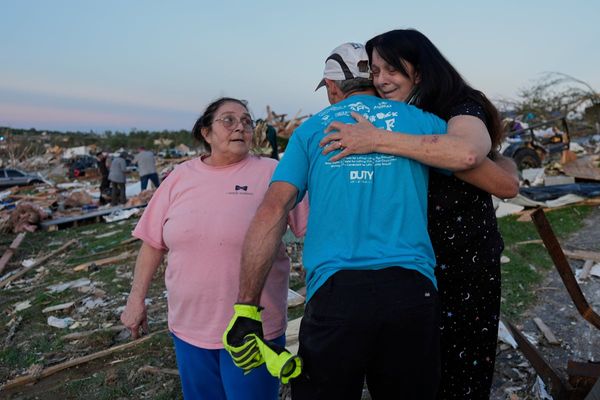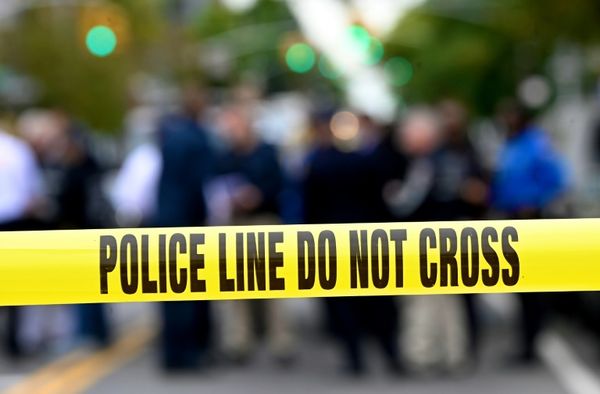SAN JOSE, Calif. _ Undeterred by the absence of missing teen Sierra LaMar's body, a Santa Clara County jury took less than two days to find the man accused of kidnapping her in broad daylight guilty of murder.
The jury also convicted Antolin Garcia-Torres, 26, of the 2009 attempted kidnappings of three other women from grocery store parking lots, which the prosecution portrayed as a "training ground" for Sierra's abduction and murder three years later.
The jury reached the verdict Monday and read it Tuesday morning in Santa Clara County Superior Court, after a closely watched trial that lasted more than three months. The jury found "special circumstances" in the first-degree murder that Garcia-Torres killed Sierra in the commission of a kidnapping, making him eligible for the death penalty.
The jury was to begin hearing evidence in a second "penalty phase" of the trial on Tuesday, after which it will decide whether he should be sentenced to death or to life in prison without parole.
"It's such a relief Sierra and her family have justice," said Peggy Osorio, one of the many volunteers who helped search for the missing teen.
Prosecutor David Boyd said "we felt very confident about the evidence we had," but added that in light of the ongoing case the District Attorney's office would not say much more.
Five of Garcia-Torres' relatives were in court. He wore a blue button-down, hands clasped as if praying. Some of those who helped search for the missing girl were quietly praying in the hushed courtroom before the jury arrived to deliver the verdict.
Sierra's mother and many others gasped and began weeping as the verdict was read. Sierra's family all shook the prosecutor's hand or hugged him as they filed out of court. A bailiff placed a hand on Garcia-Torres' shoulder as jurors filed out.
Beyond the visceral fear the case evokes of strangers abducting children, there is also the continuing mystery surrounding what happened to Sierra. Her body has not been found, despite a yearslong effort by more than 750 volunteers from around the Bay Area since she disappeared on the way to her school bus stop on the morning of March 16, 2012.
Without her body, prosecutors David Boyd and Dana Veazey faced an extra hurdle in getting a murder conviction. They had to prove the circumstantial case without an autopsy, a murder weapon or witness statements.
Konnie Bunt, another volunteer who helped search for the missing teen, said she hopes Garcia-Torres will reveal what happened to her.
"Now we just have to pray he comes to his senses and let's her family know where she is," Bunt said. "Sierra deserves to be home."
Defense attorneys Al Lopez, Brian Matthews and Bicka Barlow claimed Sierra is not dead, saying she ran away without a trace primarily because she was unhappy about having to move from her beloved hometown of Fremont to Morgan Hill with her mom and mom's boyfriend
The prosecution's challenge got even tougher after District Attorney Jeff Rosen took the rare step in a "no-body" trial of seeking the death penalty, his first since he assumed office in 2011.
If the jury convicted Garcia-Torres of first-degree murder with the special circumstance of kidnapping, the same panel would then weigh whether he should be sentenced to life without parole or death, after hearing evidence from both the prosecution and the defense.
However, if the jury convicted Garcia-Torres of second-degree murder, he would face 15 years to life in prison. If they acquitted him, the law prevents prosecutors from trying him again for her murder even if new evidence arose.
Prosecutors relied on physical evidence, including what crime lab analysts said was traces of Sierra's DNA in Garcia-Torres' car. Among several spots in the car, her DNA was found on a single strand of her hair on a rope in the trunk, while his DNA was on her pants found abandoned in a field. He told police they never met.
Garcia-Torres' fingerprint also was found on a battery found on a stun gun dropped by the assailant in one of the supermarket attacks.
Lopez said the fingerprint could have gotten there because Garcia-Torres worked at the Morgan Hill Safeway where the battery was purchased and frequently re-shelved torn battery packages.
The defense also said the jury should disregard the DNA and hair evidence because it was mishandled by deputies and the crime lab analysts, raising the chances of cross-contamination from other trace or genetic evidence.
Lopez also said detectives also failed to investigate a tip from a woman who saw a brown car that was weaving and pulled over to the side of the road on the same street as Sierra's bus stop.
But Boyd told the jurors that Garcia-Torres "had five hours" he had no alibi for "to execute his plan, to dispose of her body, to do unspeakable things to her." Garcia-Torres told police he had been on a short fishing trip that morning.
"You don't need to strip her naked to kill her, to discard her body," Boyd said, hinting at a possible sexual motive. "You strip her naked because you want her body."







